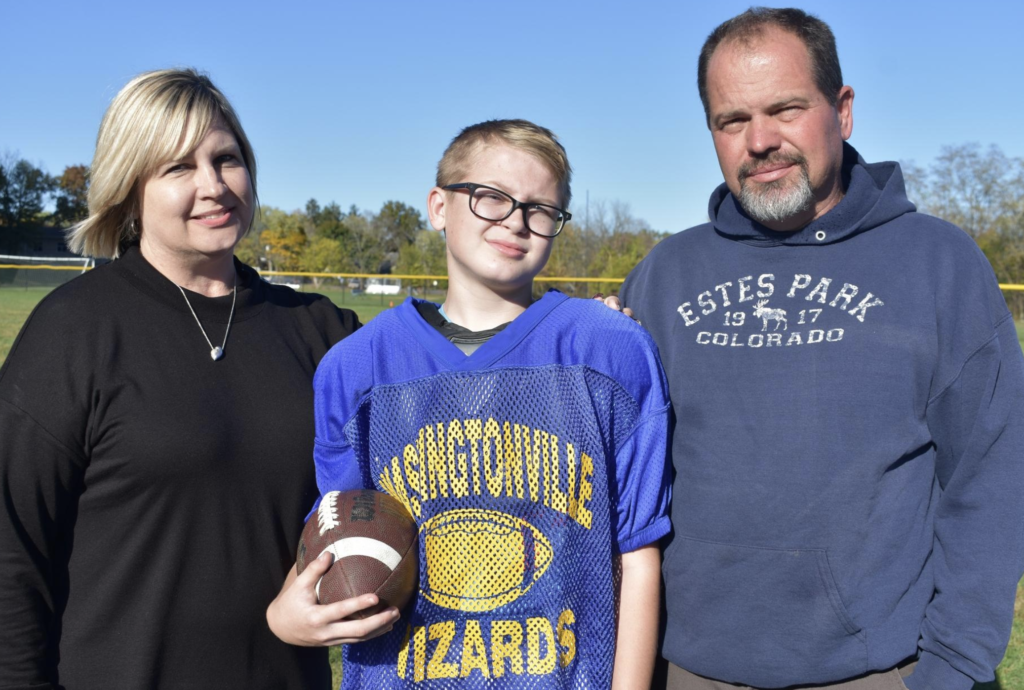By Justin Fedich, Times Herald Record, originally posted Oct 25, 2019

WASHINGTONVILLE — Look William Sanner in the eyes and there are no obvious clues that he is any different than your typical 12-year-old. He plays all the sports he can, drives tractors, rides dirt bikes and welcomes contact on a football field. Never mind that one of his eyes is artificial. Sanner is as normal as the rest of us.
Sanner, a safety and wide receiver on the Washingtonville modified-B football team, doesn’t have a blueprint for what he wants to achieve athletically. He’s not even a teenager yet. But already, he understands his ability to be a role model for anyone who feels like they might be limited in some capacity, be it physical, mental or social. He is a one-eyed boy playing a sport in which vision is a virtue. By stepping on the field, he is exuding bravery, even if to him, he’s just playing football.
“I’ve gotten used to it,” Sanner said.
Dreadful accident
Sanner doesn’t remember that afternoon in the living room, but the memory is seared into the minds of his parents. At 15 months old, he was still finding his footing as a walker. He grabbed onto a doll stroller that his sister was pushing for support. As he came tumbling to the ground, the stroller came with him, the curved handles puncturing his left eye.
His father, also named William, saw it happen. Sandy, his mother, was close behind and shepherded him into the bathroom.
“You couldn’t see his eyeball anymore,” Sandy said. “I knew it was bad.”
From one hospital to the next, one doctor to the next, the diagnoses revealed the disconcerting truth. Sanner’s retina couldn’t be reconnected. The eye would have to be removed.
Both Sandy and her husband have lost their fathers, and there is a familiar pain associated with seeing their child lose half of his sight.
“My father died in my arms, and my son,” William said, voice cracking, “lost his eye.”

A vision all his own
On a field behind Washingtonville Middle School, Sanner doesn’t look lost at all. Hovering behind the defense at safety, he is on an island, but one he knows well. He started playing football when he was 4 and took to the sport the way competitive boys do.
It will always be more of a challenge for Sanner, who must constantly scan the field like a pedestrian crossing a crowded intersection. It’s not something he’s rattled by anymore. Asked if he thinks about the obstacles he faces compared to his teammates, he answers, “Not really.”
Though his parents live with the memory of the traumatic day, Sanner was too young. Seeing the world through one eye is all he’s known, and perhaps it’s why he appears unconcerned that there’s anything different about him.
His parents hope that his story serves not to bring attention to what Sanner lacks but rather what others can gain by seeing the way he approaches each day. Look him in the eyes, really take a close, hard look. It’s not clear to see that one is real and the other a concave imposter. And that’s the way that Sanner sees himself, too.
He believes he can be as good an athlete as anyone else.
“You just have to put your mind to it,” Sanner said.


 Category:
Category: 
Social Profiles